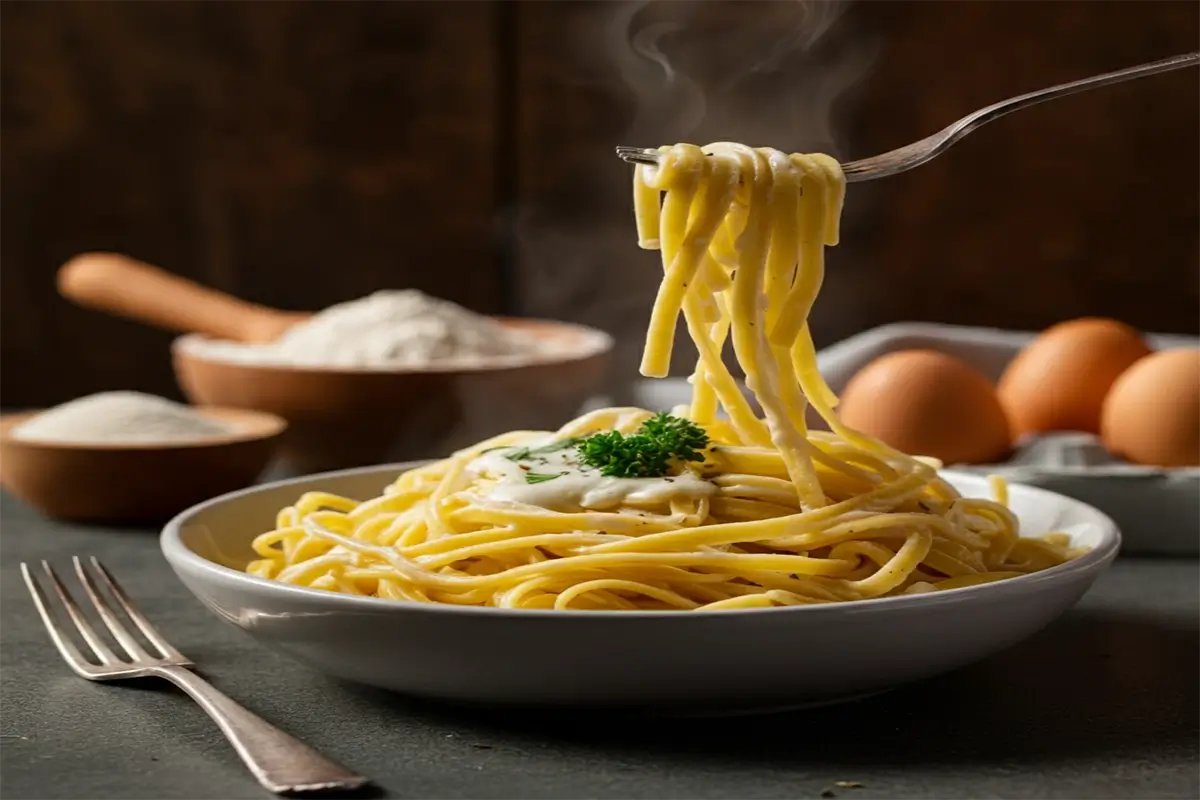Why Gluten Free Egg Noodles Matter
Imagine a dinner table where everyone enjoys the same delicious meal without worrying about dietary restrictions. For those who live with gluten sensitivities or celiac disease, the search for a satisfying noodle dish can often feel like an uphill battle. You’re not alone if you’ve wondered whether you can still enjoy hearty pasta dishes without compromising your health. Thankfully, gluten free egg noodles offer a delectable solution that bridges the gap between flavor and dietary needs.
If you’ve been searching for ways to elevate your gluten-free cooking game, you’re in the right place. This guide unpacks everything you need to know about gluten free egg noodles—from what they are to how you can easily make them at home.
Table of Contents
Understanding Gluten Free Egg Noodles
What Are Gluten Free Egg Noodles?
At their core, gluten free egg noodles are a simple twist on traditional pasta. Instead of wheat-based flours, they use gluten free alternatives like rice flour, almond flour, or tapioca starch. These substitutions ensure the noodles remain tender and flavorful while catering to those with gluten sensitivities.
The combination of gluten free flour and eggs creates a dough that’s not only versatile but also surprisingly easy to work with. Whether you prefer thin ribbons or thick, hearty strips, gluten free egg noodles are adaptable to countless dishes.
Benefits of Gluten Free Egg Noodles
Switching to gluten free egg noodles isn’t just about avoiding gluten—it’s about embracing a healthier, more inclusive way of eating. Here’s why you should consider them:
- Health Benefits: Gluten free noodles are ideal for people with gluten intolerance, celiac disease, or non-celiac gluten sensitivity.
- Nutritional Profile: Many recipes incorporate nutrient-dense ingredients like almond flour, boosting protein and healthy fat content.
- Diverse Applications: From soups to stir-fries, these noodles adapt to almost any cuisine.
Types of Gluten Free Egg Noodles
When it comes to gluten free egg noodles, you have two main options:
- Store-Bought Varieties: Convenient and time-saving, these are perfect for quick meals. Brands like Jovial and Tinkyada are popular for their quality and taste.
- Homemade Creations: Making your own noodles allows for greater control over ingredients and texture, ensuring your dish is exactly how you like it.
How to Make Gluten Free Egg Noodles at Home
Ingredients You’ll Need
Creating your own gluten free egg noodles requires only a handful of simple ingredients:
| Ingredient | Quantity | Notes |
|---|---|---|
| Gluten free flour | 2 cups | Rice or almond flour works best. |
| Eggs | 3 large | Provides structure and richness. |
| Xanthan gum | 1 tsp | Helps bind the dough together. |
| Salt | ½ tsp | Enhances flavor. |
| Water | As needed | Adjusts dough consistency. |
Step-by-Step Instructions
1. Mix the Dough: Creating the Perfect Base

Start by selecting your preferred gluten free flour. Popular options include rice flour for a light texture or almond flour for a nutty flavor. Place two cups of the flour into a large mixing bowl, and add one teaspoon of xanthan gum, which acts as a binding agent to replace the elasticity lost without gluten. Sprinkle in ½ teaspoon of salt to enhance the flavor.
Using a spoon or your hands, mix the dry ingredients thoroughly to ensure even distribution. Next, make a well in the center of the mixture. Crack three large eggs into the well and gently whisk them with a fork, gradually incorporating the flour from the sides. As the dough begins to come together, switch to using your hands to knead it gently. Add small amounts of water, one tablespoon at a time, if the dough feels too dry or crumbly. Aim for a cohesive, pliable dough that’s not too sticky.
2. Knead and Rest: Building Structure
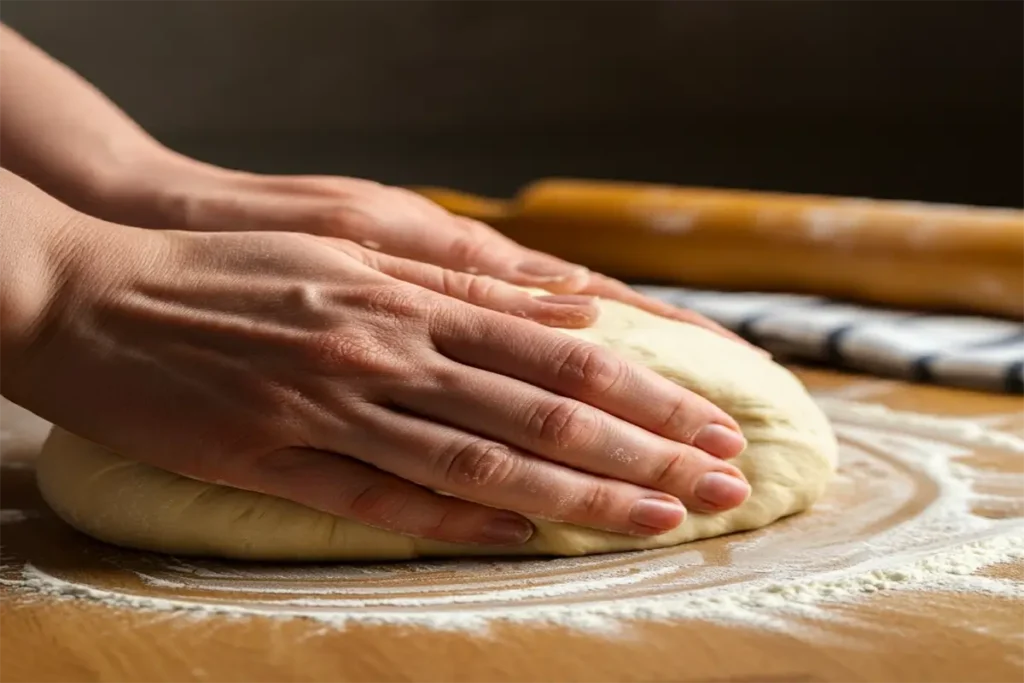
Once the dough has come together, transfer it onto a clean, lightly floured surface. Begin kneading by folding the dough over itself and pressing down with the heel of your hand. Rotate the dough slightly after each fold to ensure even kneading. Continue this process for 5–7 minutes until the dough becomes smooth and elastic.
Why is kneading essential? This stage develops the structure of the dough, ensuring it holds together when rolled and cut. Gluten free flours can be more fragile, so this step helps strengthen the dough.
After kneading, cover the dough with plastic wrap or a damp kitchen towel to prevent it from drying out. Allow it to rest for 20 minutes. Resting is crucial because it lets the ingredients fully hydrate, making the dough easier to roll and cut.
3. Shape the Noodles: Achieving Your Desired Style
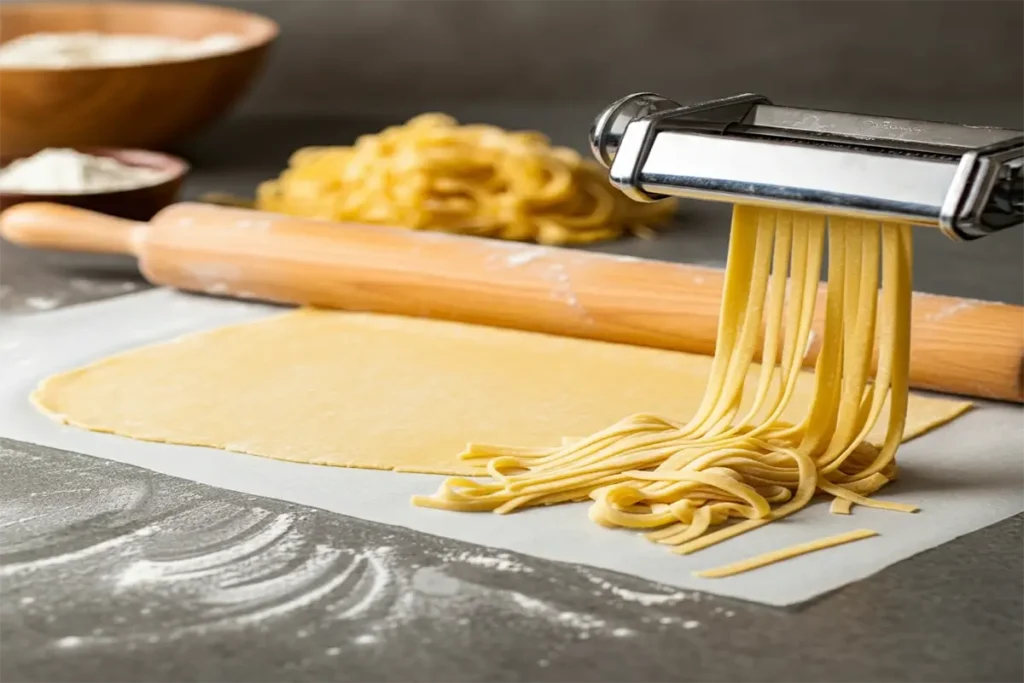
Divide the rested dough into manageable portions, usually two or three, to make rolling easier. Dust your work surface and rolling pin with a little gluten free flour to prevent sticking. Roll out one portion of dough at a time, working from the center outward. Aim for a uniform thickness—about 1/8 inch thick for most noodles, or thinner if you prefer delicate pasta.
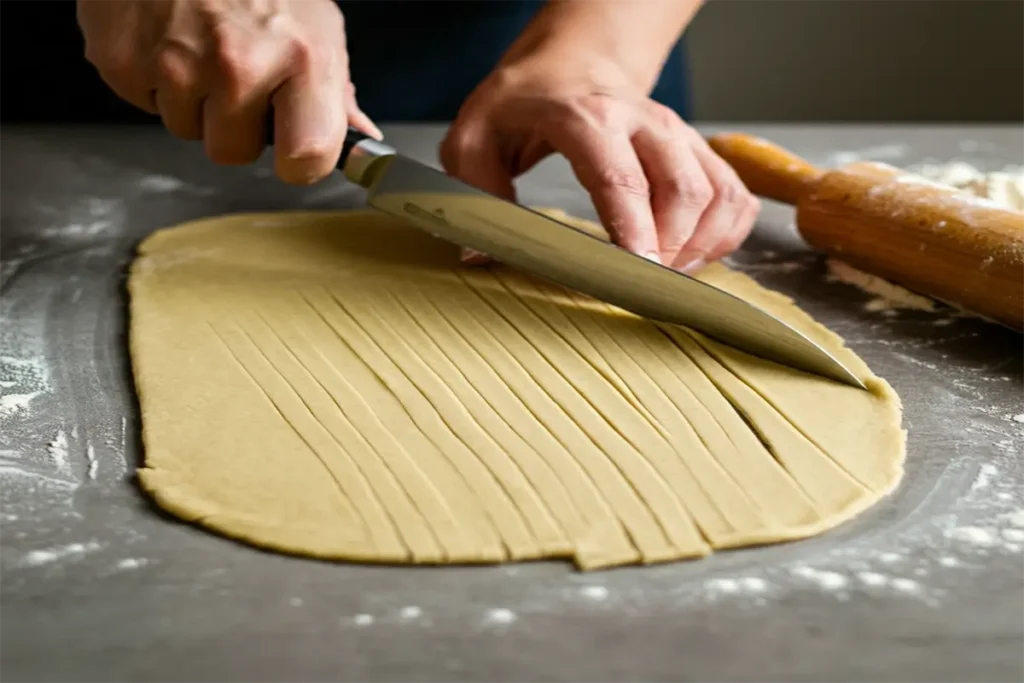
Once rolled, use a sharp knife, pizza cutter, or pasta cutter to slice the dough into strips. You can make wide noodles for dishes like pappardelle or thin strips for soups. If you have a pasta machine, this process becomes even easier and more precise. For a rustic look, don’t worry about perfect edges—hand-cut noodles add charm to homemade pasta dishes.
4. Cook to Perfection: The Final Touch
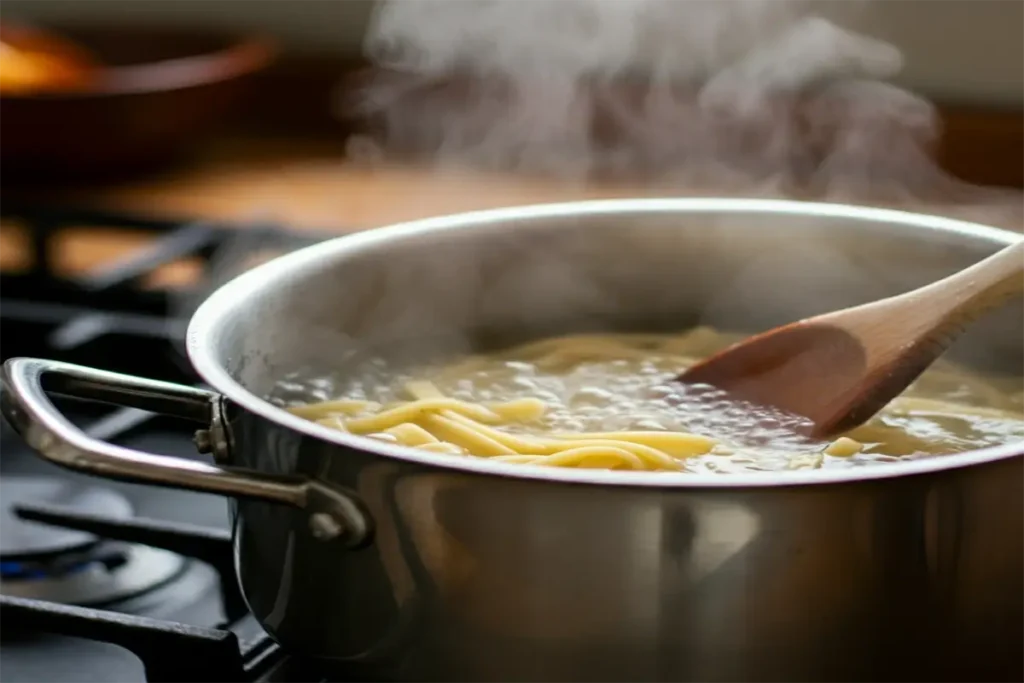
Fill a large pot with water and bring it to a boil. Add a generous pinch of salt to the water to season the noodles as they cook. Gently add the freshly cut noodles to the boiling water. Stir immediately with a wooden spoon or spatula to prevent them from sticking together.
Keep a close eye on the noodles as they cook; gluten free pasta tends to cook faster than wheat-based varieties. The noodles are done when they float to the surface, usually within 3–5 minutes. Taste one to ensure it’s cooked to your preference—soft but not mushy.
Drain the noodles in a colander, then rinse briefly with cold water to halt the cooking process and remove excess starch. Toss them lightly with olive oil or butter to prevent sticking if you’re not serving them immediately.
By carefully following each of these stages, you’ll create tender, flavorful gluten free egg noodles that rival traditional pasta in both taste and texture. These steps ensure your noodles are not only easy to make but also a versatile addition to a variety of dishes.
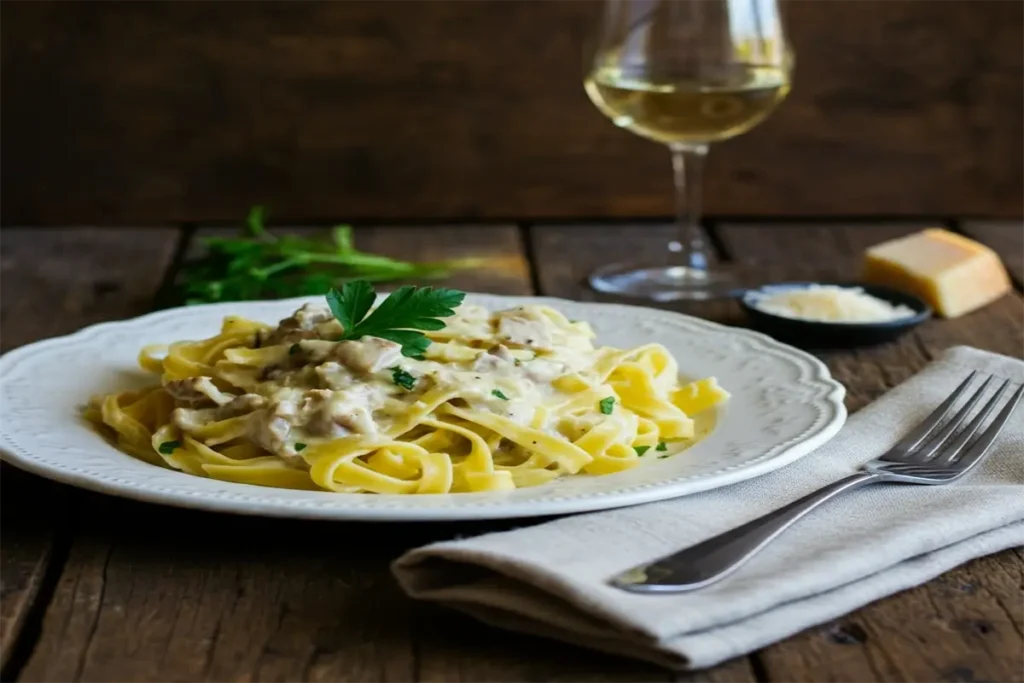
Best Gluten Free Egg Noodle Recipes to Try
Classic Chicken Noodle Soup
Few dishes are as comforting as a warm bowl of chicken noodle soup. With gluten free egg noodles, you can recreate this timeless favorite without compromising flavor. Pair your noodles with tender chicken, fresh vegetables, and a savory broth for a meal that feels like a hug in a bowl.
Gluten Free Stir Fry with Egg Noodles
For a quick and nutritious dinner, try stir-frying your gluten-free egg noodles with vibrant vegetables, lean protein, and a splash of gluten-free soy sauce. This dish is perfect for busy weeknights when you need something healthy and satisfying.
Creamy Alfredo with Gluten-Free Noodles
Indulge in a creamy Alfredo sauce served over gluten-free egg noodles for a luxurious treat. If you’re avoiding dairy, consider using cashew cream or coconut milk as an alternative to traditional cream.
Tips for Buying Gluten-Free Egg Noodles
What to Look for in Stores
When shopping for gluten-free egg noodles, pay close attention to:
- Labels: Look for certifications like “Certified Gluten-Free.”
- Ingredients: Avoid products with unnecessary additives or fillers.
- Cross-Contamination: Check if the noodles are processed in a dedicated gluten-free facility.
Recommended Brands
Some of the top-rated gluten-free egg noodle brands include:
- Jovial: Known for its organic ingredients and excellent texture.
- Tinkyada: Praised for its consistency and taste.
Exploring the Origins of Gluten-Free Noodles
While gluten-free egg noodles are a relatively modern innovation, their roots can be traced to ancient cooking traditions. Asian cuisines, for instance, have long embraced naturally gluten-free noodles made from rice, mung bean, or sweet potato starches. These culinary practices demonstrate how cultures around the world have adapted their recipes to meet the dietary needs of their communities. By incorporating gluten-free egg noodles into your cooking, you’re not only embracing a healthier lifestyle but also participating in a global legacy of innovative and inclusive food preparation.
Pairing Gluten-Free Egg Noodles with Sauces and Toppings
One of the joys of gluten-free egg noodles is their versatility. The right sauce can transform your dish from simple to extraordinary. Here are a few pairing ideas:
- Light and Fresh: Toss your noodles in a lemon-garlic olive oil blend with a sprinkle of fresh parsley for a bright and refreshing meal.
- Savory and Hearty: Opt for a rich tomato-based sauce with ground turkey or beef for a classic comfort dish.
- Spicy and Bold: Drizzle a spicy peanut sauce over your noodles, topped with crushed peanuts and a dash of lime juice for an Asian-inspired twist.
Experimenting with different toppings, like roasted vegetables or sautéed mushrooms, further elevates the dish while adding nutritional value.
The Science Behind Gluten-Free Flours
Understanding the role of gluten-free flours in noodle-making can improve your results. Unlike wheat flour, gluten-free flours lack the elasticity that gluten provides. Ingredients like xanthan gum or psyllium husk act as binders, mimicking the stretchy texture gluten imparts to traditional dough. This scientific approach ensures your gluten-free egg noodles hold their shape and don’t crumble during cooking. For those who love experimenting in the kitchen, exploring different flour combinations can lead to exciting new textures and flavors.
Adapting Traditional Recipes
Transforming your favorite traditional pasta dishes into gluten-free versions is easier than you think. The key lies in thoughtful substitutions: swap wheat-based noodles for gluten-free egg noodles, use gluten-free breadcrumbs for toppings, and ensure all sauces and seasonings are gluten-free. Recipes like lasagna, carbonara, and baked ziti can be reinvented with a gluten-free twist, offering the same comfort and nostalgia while accommodating dietary needs.
Gluten Free Egg Noodles for Meal Prep
Gluten-free egg noodles aren’t just for dinner; they’re a fantastic option for meal prepping. Cook a batch at the beginning of the week and store them in the refrigerator for quick lunches or dinners. They pair well with soups, salads, and stir-fries, making them a versatile addition to your weekly menu. Pre-cooked noodles save time while ensuring you always have a gluten-free option on hand, whether you’re packing lunches for work or preparing a last-minute family dinner.
Sustainable Cooking with Gluten-Free Egg Noodles
Homemade gluten-free egg noodles are not just healthier—they’re also environmentally friendly. By creating your noodles at home, you reduce packaging waste and avoid the carbon footprint associated with shipping store-bought products. Additionally, using locally sourced ingredients supports sustainable farming practices and ensures fresher, higher-quality meals. Choosing homemade options is a small yet impactful way to contribute to a greener planet while enjoying delicious food.
Frequently Asked Questions (FAQs)
1. Are gluten-free egg noodles healthy?
Absolutely! Gluten-free egg noodles are often made with wholesome ingredients like almond flour, which provides additional nutrients compared to traditional wheat noodles.
2. Can I freeze homemade gluten-free egg noodles?
Yes, you can! Lay the noodles on a baking sheet, freeze until solid, then transfer them to an airtight container. They’ll keep for up to 3 months.
3. What’s the best flour for gluten-free egg noodles?
Rice flour and almond flour are popular choices, but a gluten-free all-purpose blend works well too.
4. How do I prevent gluten-free noodles from falling apart?
Incorporating xanthan gum or psyllium husk powder into the dough helps bind the ingredients together, ensuring a sturdy noodle.
Conclusion
Gluten-free egg noodles open up a world of possibilities, proving that dietary restrictions don’t have to limit your culinary creativity. Whether you’re whipping up a comforting soup, a flavorful stir-fry, or a decadent pasta dish, these noodles deliver on taste, texture, and versatility.
Now it’s your turn to experiment. Grab your ingredients, roll up your sleeves, and start crafting gluten-free meals that everyone at the table will love. Ready to elevate your cooking game? Share your creations and inspire others to embrace the gluten-free lifestyle!

